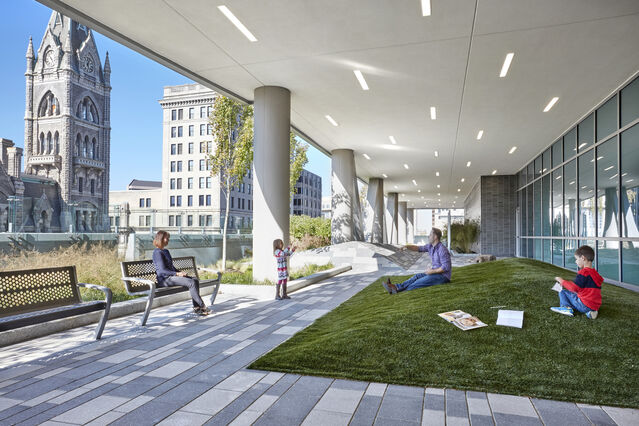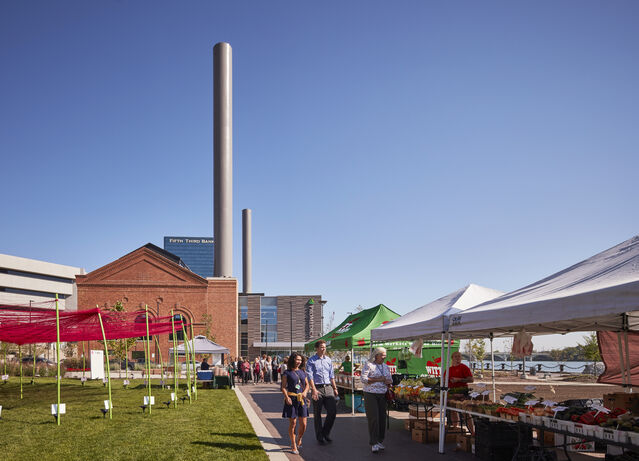Loneliness
Is Your Environment Making You Lonely?
Five ways to create places that connect us.
Posted May 3, 2021 Reviewed by Matt Huston
Key points
- Loneliness and social isolation are threatening millions of people; however, increasing connection can reduce risk.
- The places we live can exacerbate our sense of isolation and loneliness.
- Concrete design strategies—like universal accessibility, incorporation of nature, and shared spaces—can foster social health.
By Erin Peavey and Julianne Holt-Lunstad, Ph.D.
From streets to senior living centers, the spaces where we live impact our sense of belonging, trust in others, health, and happiness. The hopeful news is that it is possible to create places that connect us.
Loneliness and social isolation are undermining the health and well-being of millions of people—and changes in our buildings and infrastructure design have exacerbated this. Unwittingly, many of us have moved from more communal and public life to increasingly privatized and separated ways of living.
While loneliness is often the headline, a broader phenomenon of concern is social health, which is how well we feel in relation to others; for instance, our trust in our neighbors, our sense of belonging, or the strength of our relationships. Research shows the risks of poor social health for physical health and well-being.
To improve social health will require a cultural shift, and with it, architecture that elevates long-term human connection. A proposed $2 trillion infrastructure investment by the Biden administration has the opportunity to advance long-term human connection with a short-term economic investment through design.
Below are some strategies for creating environments that can foster social health and combat loneliness.

Elevate Shared Space
Humans are territorial. Our need to define space and feel ownership helps us to feel safe, but it can also exclude. This is why the in-between spaces (porches, patios, reception areas) and shared spaces (public squares, dog parks, community rooms) are so critical. In these spaces, our identity can be more fluid, and our intrinsic ability to connect and feel connected can take root.
Access to All Generations
By 2030, the population of adults aged 65 and above will outnumber children for the first time in our nation’s history. The AARP Livable Communities initiative is helping to create a roadmap for cities to create more equitable and aging-friendly spaces. Many of the principles involved—easy walkability, safety, ample places to sit with shelter from the elements, and consistent sidewalks with curb cuts—are not new to urban design thinking, and yet their ability to foster or hamper social connection is just beginning to be understood. Although research shows that chronic loneliness in older adults can be especially harmful, all demographic groups can experience high levels of loneliness and need supportive environments.
Green Spaces Naturally Connect
In neighborhoods around the nation, there are pockets of abandoned spaces, from alleyways to empty lots. These spaces are often anxiety-producing for those who see them, convenient places for crime and refuse. Yet, small, well-tended green spaces throughout our neighborhoods can have a monumental impact—offering respite, a chance to connect with neighbors, and helping to reduce isolation. As populations become increasingly urbanized, creating places that foster recreation and socialization is essential.

Give Them a Reason to Connect
Despite the universal need for human connection, the inertia of being alone can be challenging. Providing activities, both ordinary (grocery shopping, eating) and special (holiday events, festivals), can pull people into the public realm and invite them to participate in public life.
In large cities such as Austin, San Francisco, and Dallas, new apartments and condos are infilling our urban cores. Despite ample evidence on how a mix of uses (housing, retail, grocery) fosters social capital, sense of community, and accessibility, few of these housing options have even the most basic features to support the local communities where they are being built.
Get Involved in the Community
Places that feel especially connected are driven by the community members. Microgrants have helped fund small, citizen-led community projects. Research shows working with others on a shared challenge or project, like a community garden, is one of the fastest ways to connect a group of strangers.
The places we design, fund, and create today will shape our lives for years to come, and an investment in human connection will pay dividends for generations.
Authors' Note
Erin Peavey co-authored this post with Julianne Holt-Lunstad, Ph.D., Professor of Psychology and Neuroscience at Brigham Young University and a fellow of the Society of Experimental Social Psychology and Association for Psychological Science. Both have spent a great deal of their careers focused on the role of social connection in health. What has become clear to them is not only the staggering toll of loneliness on the health of our nations, but also the very real role that the built environment plays in shaping our landscape of disconnection.





